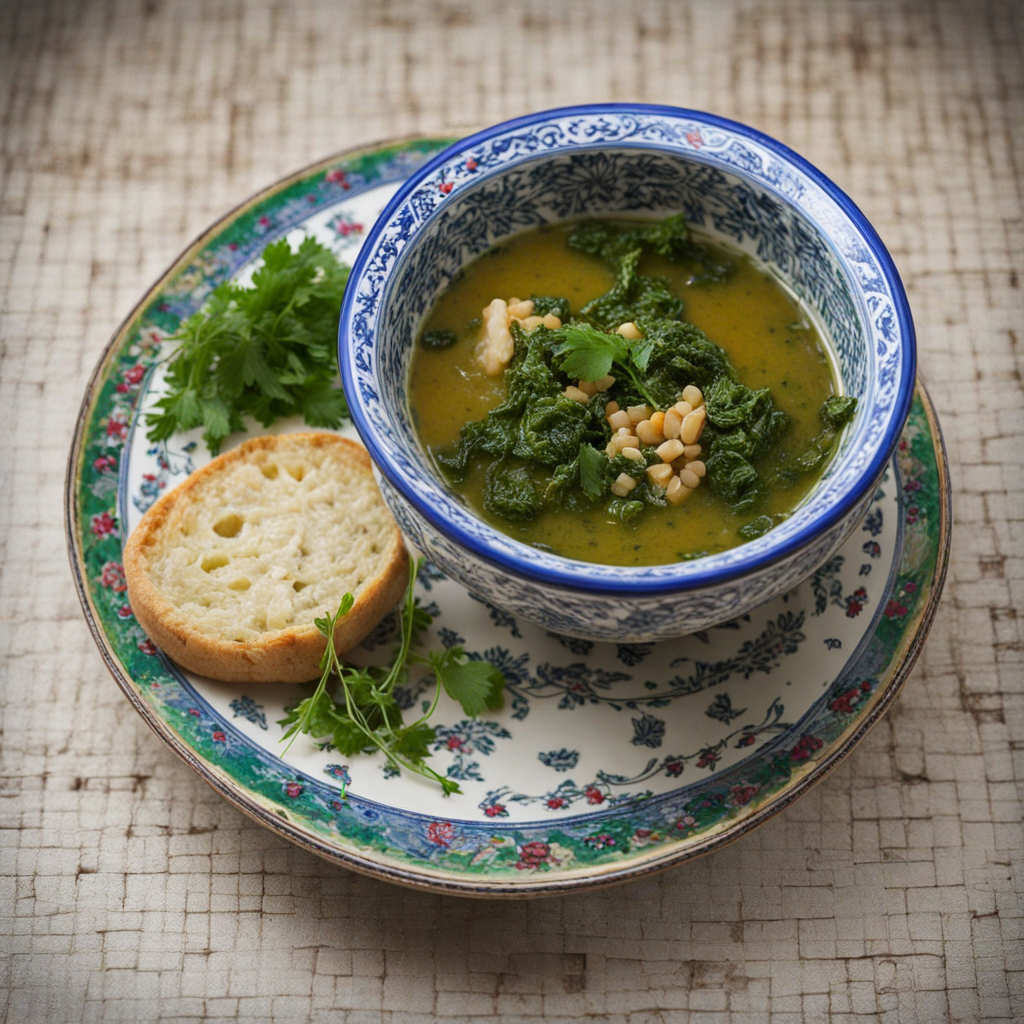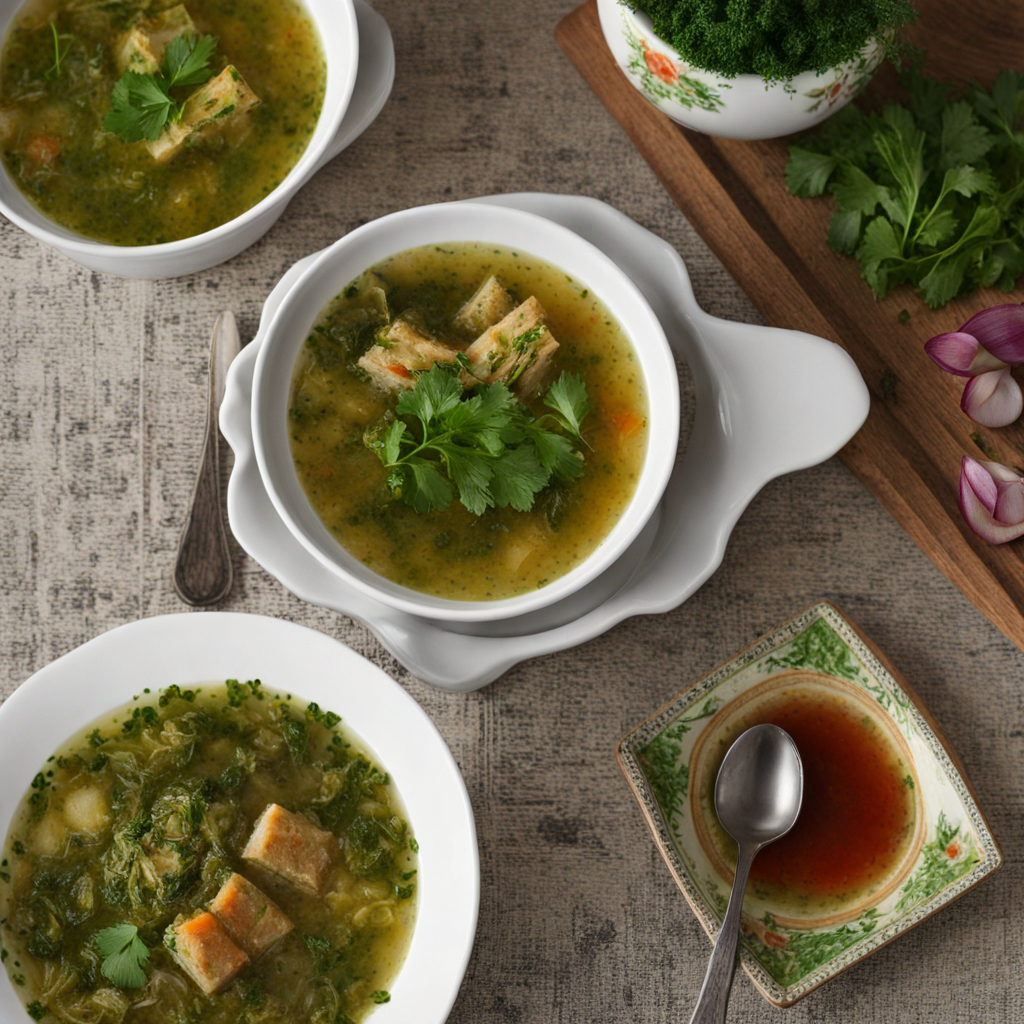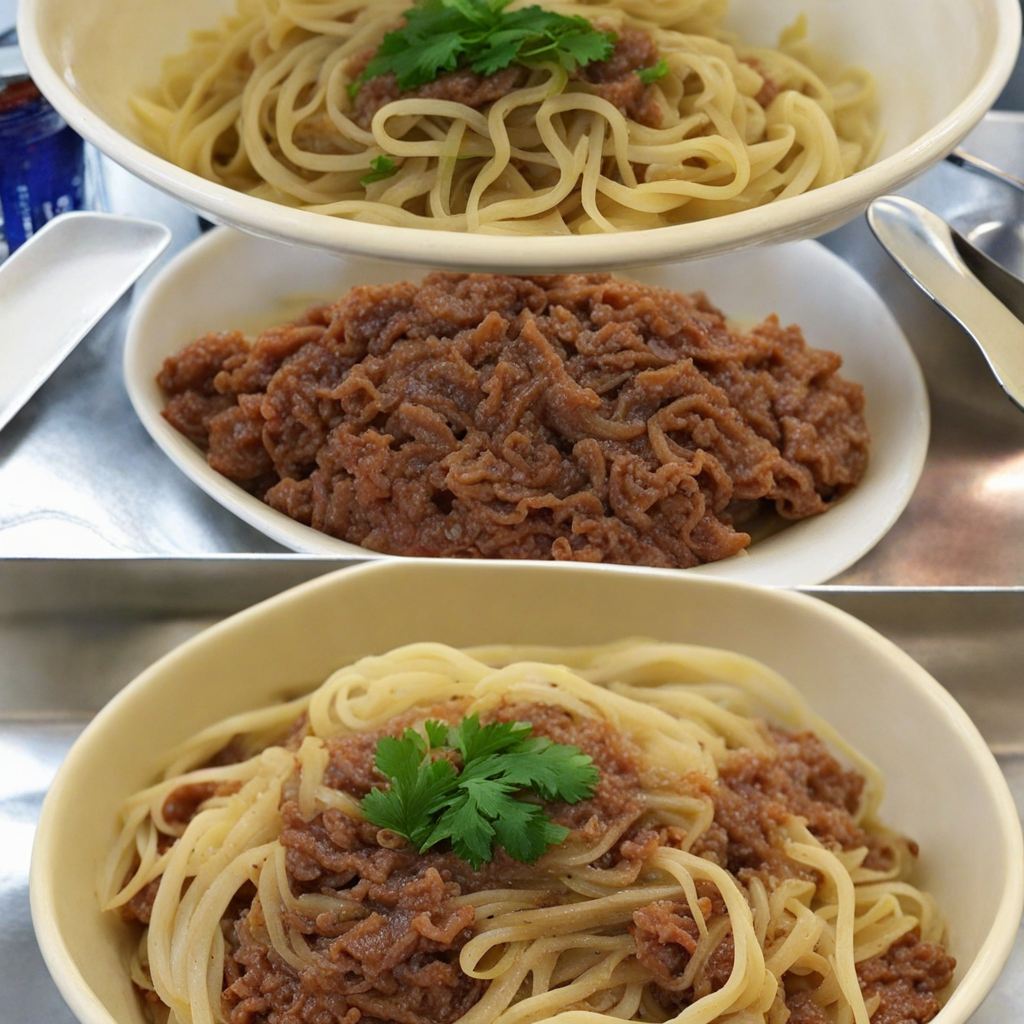Oshi Toki
Oshi Toki is a delightful Uzbek dish that brings together a vibrant medley of flavors and textures, making it a must-try for any adventurous food lover. At its core, Oshi Toki consists of hearty rice cooked to perfection, often enriched with a variety of fresh vegetables, such as carrots and bell peppers. The rice is usually seasoned with fragrant spices, imparting a warm and aromatic quality that transports you to the heart of Central Asia. The dish is often garnished with herbs like dill or parsley, adding a touch of freshness that balances the richness of the other ingredients. One of the standout features of Oshi Toki is the way it showcases the cultural influences of Uzbekistan. The dish often incorporates tender pieces of meat, such as lamb or beef, which are slow-cooked to achieve a melt-in-your-mouth tenderness. This element not only adds depth to the dish but also makes it a satisfying meal that can be enjoyed any time of day. The combination of spices, meat, and vegetables creates a harmonious blend that is both comforting and exciting, appealing to a wide range of palates. What truly sets Oshi Toki apart is the communal aspect of its presentation. Traditionally served in a large platter, it invites sharing and conversation, making it a perfect dish for gatherings and celebrations. As you dig into the colorful layers of rice, meat, and vegetables, you'll experience a burst of flavors that reflect the rich culinary heritage of Uzbekistan. Whether it's your first encounter with Uzbek cuisine or a new addition to your culinary repertoire, Oshi Toki promises to be a memorable experience that tantalizes the taste buds and warms the soul.
How It Became This Dish
The Culinary Journey of Оши Токи: A Taste of Uzbekistan Introduction to Оши Токи Оши Токи, often simply referred to as "Osh," is a quintessential dish that embodies the heart and soul of Uzbek cuisine. This fragrant, colorful rice dish, typically enriched with meat, vegetables, and a blend of spices, has its roots deeply embedded in the history and culture of Uzbekistan. Known for its communal nature, Osh transcends mere sustenance—it's a symbol of hospitality, tradition, and the rich agricultural bounty of the region. Origins of Оши Токи The origins of Оши Токи can be traced back to the ancient Silk Road, which passed through present-day Uzbekistan. This region served as a critical crossroads for traders, travelers, and cultures, facilitating the exchange of goods, ideas, and culinary practices. The concept of cooking rice with meat is believed to have been influenced by various civilizations that traversed this historic route, including Persian, Arab, and Mongolian cultures. Rice cultivation began in Central Asia around the 7th century, and as it became a staple crop, innovative cooking methods and recipes emerged. The first known references to a dish resembling Оши Токи appeared in historical texts from the 10th century, but the dish as we know it today likely evolved over centuries, adapting to the local palate and available ingredients. Cultural Significance In Uzbekistan, food is more than just a necessity; it is a vital part of social life and cultural identity. Оши Токи holds a special place in this context. It is often served during festive occasions, family gatherings, and religious ceremonies, symbolizing unity and abundance. Traditionally, it is prepared and consumed communally, reflecting the Uzbek values of hospitality and togetherness. The preparation of Оши Токи itself is a communal event. Families often gather to cook it together, with each member playing a role, from selecting the freshest ingredients to stirring the pot. This shared experience fosters a sense of community and reinforces familial bonds. In many households, the recipe for Оши Токи is passed down through generations, each family adding their unique twist, thereby preserving their culinary heritage. Ingredients and Preparation The core ingredients of Оши Токи typically include rice (often the long-grain variety known as "plov rice"), lamb or beef, carrots, onions, and a medley of spices such as cumin, coriander, and garlic. The dish is characterized by its vibrant colors, with the saffron and turmeric giving the rice a golden hue, while the vegetables add a rainbow of flavors and textures. The preparation of Оши Токи is an art form in itself. The process begins with frying chunks of meat in a large, shallow pot known as a "kazan." Once browned, onions are added until they become translucent. Then, julienned carrots are introduced, which caramelize and lend their sweetness to the dish. The rice is rinsed and added to the pot, followed by water and spices. The dish is then left to simmer, allowing the flavors to meld together and the rice to absorb the rich broth. Traditionally, Оши Токи is served on a large platter, with the rice piled high and the meat and vegetables artfully arranged on top. It is often accompanied by a side of fresh salad, bread, and yogurt, allowing diners to enjoy a well-rounded meal. Regional Variations While Оши Токи is recognized as a national dish, different regions of Uzbekistan have developed their variations, each reflecting local ingredients and culinary traditions. For example, in the Fergana Valley, a sweeter version may include dried fruits like raisins or apricots, while in Samarkand, the dish might feature a different blend of spices, giving it a unique flavor profile. Moreover, the method of preparation can vary significantly. In some areas, Оши Токи is cooked directly over an open flame, infusing it with a smoky flavor, while in urban centers, it may be prepared in more modern kitchens with advanced cooking techniques. This adaptability speaks to the resilience of the dish, which has maintained its relevance throughout changing times. Оши Токи in Modern Uzbekistan In contemporary Uzbekistan, Оши Токи remains a staple of both home cooking and restaurant menus. It is frequently featured at weddings, holidays, and other significant celebrations, often considered a must-have dish that signifies festivity and abundance. The dish's popularity has also led to the establishment of specialized restaurants that focus solely on creating the perfect Оши Токи, attracting both locals and tourists alike. In recent years, there has been a growing interest in preserving traditional Uzbek cuisine amidst globalization. Chefs and culinary enthusiasts are exploring the history and intricacies of Оши Токи, experimenting with new ingredients while honoring the classic recipes passed down through generations. This revival not only sustains the culinary traditions of Uzbekistan but also introduces the dish to a global audience eager to explore the rich flavors of Central Asian cuisine. Conclusion Оши Токи is more than just a dish; it is a cultural emblem that encapsulates the history, agricultural wealth, and communal spirit of Uzbekistan. From its ancient roots along the Silk Road to its modern iterations, Оши Токи has evolved while remaining a symbol of hospitality and tradition. As Uzbekistan continues to embrace its rich culinary heritage, Оши Токи stands as a testament to the enduring power of food to bring people together, celebrate life, and preserve cultural identity. Whether enjoyed at a bustling celebration or a quiet family meal, Оши Токи remains a beloved dish that nourishes both the body and the soul, inviting everyone to partake in its rich history and flavors.
You may like
Discover local flavors from Uzbekistan







